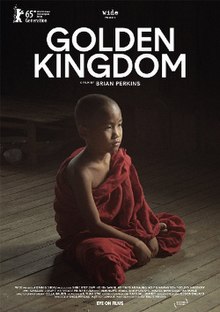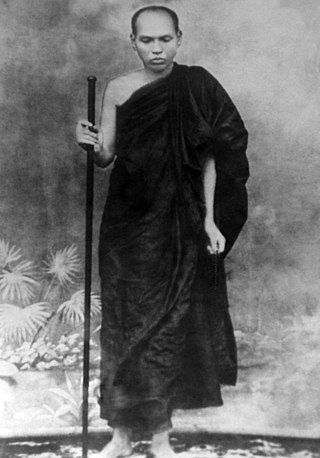
Ledi Sayadaw U Ñaṇadhaja was an influential Theravada Buddhist monk. He was recognized from a young age as being developed in both the theory (Abhidhamma) and practice of Buddhism and so was revered as being scholarly. He wrote many books on Dhamma in Burmese and these were accessible even to a serious lay person, hence he was responsible for spreading Dhamma to all levels of society and reviving the traditional practice of Vipassanā meditation, making it more available for renunciates and lay people alike.

Buddhism, specifically Theravāda Buddhism, is the state religion of Myanmar since 1961, and practiced by nearly 90% of the population. It is the most religious Buddhist country in terms of the proportion of monks in the population and proportion of income spent on religion. Adherents are most likely found among the dominant Bamar people, Shan, Rakhine, Mon, Karen, and Chinese who are well integrated into Burmese society. Monks, collectively known as the sangha (community), are venerated members of Burmese society. Among many ethnic groups in Myanmar, including the Bamar and Shan, Theravada Buddhism is practiced in conjunction with the worship of nats, which are spirits who can intercede in worldly affairs.

A kyaung is a monastery (vihara), comprising the domestic quarters and workplaces of Buddhist monks. Burmese kyaungs are sometimes also occupied by novice monks (samanera), lay attendants (kappiya), nuns (thilashin), and young acolytes observing the five precepts.
Burmese names lack the serial structure of most Western names. The people of Myanmar have no customary matronymic or patronymic naming system and therefore have no surnames. In the culture of Myanmar, people can change their name at will, often with no government oversight, to reflect a change in the course of their lives. Also, many Myanmar names use an honorific, given at some point in life, as an integral part of the name.
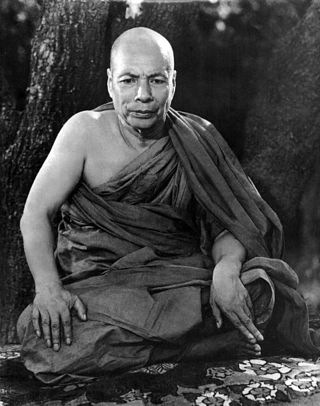
U Vimala, commonly known as the Mogok Sayadaw, was a renowned bhikkhu and vipassanā meditation master of Theravada Buddhism.
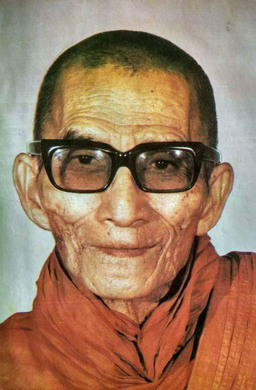
The Venerable Mingun Sayadaw U Vicittasārābhivaṃsa was a Burmese Theravāda Buddhist monk, best known for his memory skills and his role in the Sixth Buddhist Council.

U Pinnyasiha (ပညာသီဟ), commonly known as the Shwe Nya Wa Sayadaw, is a Burmese Theravada Buddhist monk, best known for teaching at Yangon Buddhist University in Kyimyindaing Township in Yangon. In December 2011, he met with Hillary Clinton, US Secretary of State, along with other civil society delegates.

U Sīlānanda was a Burmese Buddhist monk and Vipassana meditation scholar. He was also the first rector of the International Theravada Buddhist Missionary University.
Yazeinda Yazawara Mandani, or more commonly known as Maha Yazawin Kyaw, is a Konbaung period national chronicle of Burma (Myanmar). The chronicle is very similar to Hmannan Yazawin, the official chronicle of Konbaung Dynasty, except for its more sympathetic treatment of the last Toungoo kings.

Maha Bodhi Ta Htaung is a Buddhist religious complex located in Monywa Township, Sagaing Region, Myanmar (Burma). It is known for the Giant Standing Buddha statue, the third tallest in the world, and for the Great Attitudes of U Narãda, who built the monastery. This Sāsana (religious) site contains thousands of Buddha statues beneath thousands of Bo trees, the Giant Reclining Buddha Statue, Aung Sekkya Stupa, and other large Buddha statues. Currently, a Sitting Buddha Statue, which is expected to become the world's largest Sitting Buddha Statue, is in construction. Many Buddhist monks can study the Buddhist Pariyatti literature at the monastery. Moreover, meditation centres or Vipassãnā centres are opened at this monastic site both for monks and laypersons.

The Taunggwin SayadawU Visuddha Silacaraha was the last Buddhist monk to hold the office as Thathanabaing of Burma. The office was abolished after his death in 1938 and no successor was ever appointed.
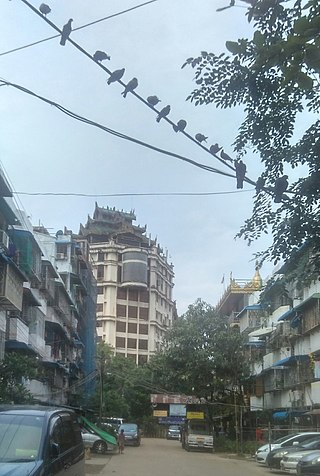
Mahāsantisukha Buddha Sasana Center is a Theravada Buddhist monastery located in Natchaung Ward, Tamwe Township, Yangon, Myanmar. The monastery was inaugurated on 17 December 1999, and was spearheaded under the leadership of Pannavamsa, and was sponsored with the support of the Burmese government.
Shin Mahāsīlavaṃsa was a Theravadan Buddhist monk and a classical Burmese poet who lived in 15th century Ava Kingdom.
The Thathanabaing of Burma served as the head of the Buddhist Sangha in pre-colonial Burma, until the position was abolished in 1938 by the British authorities in colonial Burma. The Thathanapaing was responsible for managing the monastic hierarchy and education at monasteries. The Thathanabaing resided in a royal monastery near the kingdom's capital. However, appointees were usually commoners born in the villages, with no blood relationship with the royal house. Their appointments were made on the basis of their mastery of Buddhist knowledge and literature.

Kyaikhtisaung Pagoda is a Buddhist pagoda in Bilin, Mon State, Myanmar.
The Kyaikhtisaung Sayadaw was a prominent Buddhist monk and weizza from Myanmar. Throughout his life, he restored nine Buddha Hair Relic Pagodas across the country, most of which were in Mon State.
Ma Phae Wah is a Burmese nat (spirit). She is the guardian spirit of the graveyards and cemeteries in Myanmar.
Taungpulu Tawya Kaba-Aye Sayadaw U Nandiya was an influential Theravada Buddhist monk. Taungpulu Sayadaw was born in Tesu Village, Wundwin Township of Myanmar. He was the eldest chief of U Yan and Daw Shwe The. His childhood name was Maung Paw Lar.
Ashin Thittila or Seṭṭhilābhivaṃsa, commonly known as U Thittila, was a Burmese Theravada Buddhist monk, who was also a distinguished and brilliant scholar of Buddhist literature (Pariyatti) and meditation teacher (Patipatta). He is said to be the first religious worker among the Burmese monks left for a foreign country to do Buddhist missionary work by living there for long years, to be exact, 14 consecutive years in England.
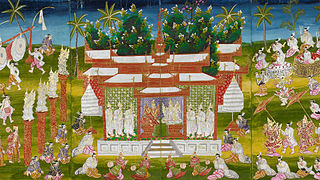
The coronation (Rajabhiseka) of Mindon Min and Setkya Dewi as king and queen of the Konbaung Kingdom took place at Mandalay Palace on 14 May 1857.
